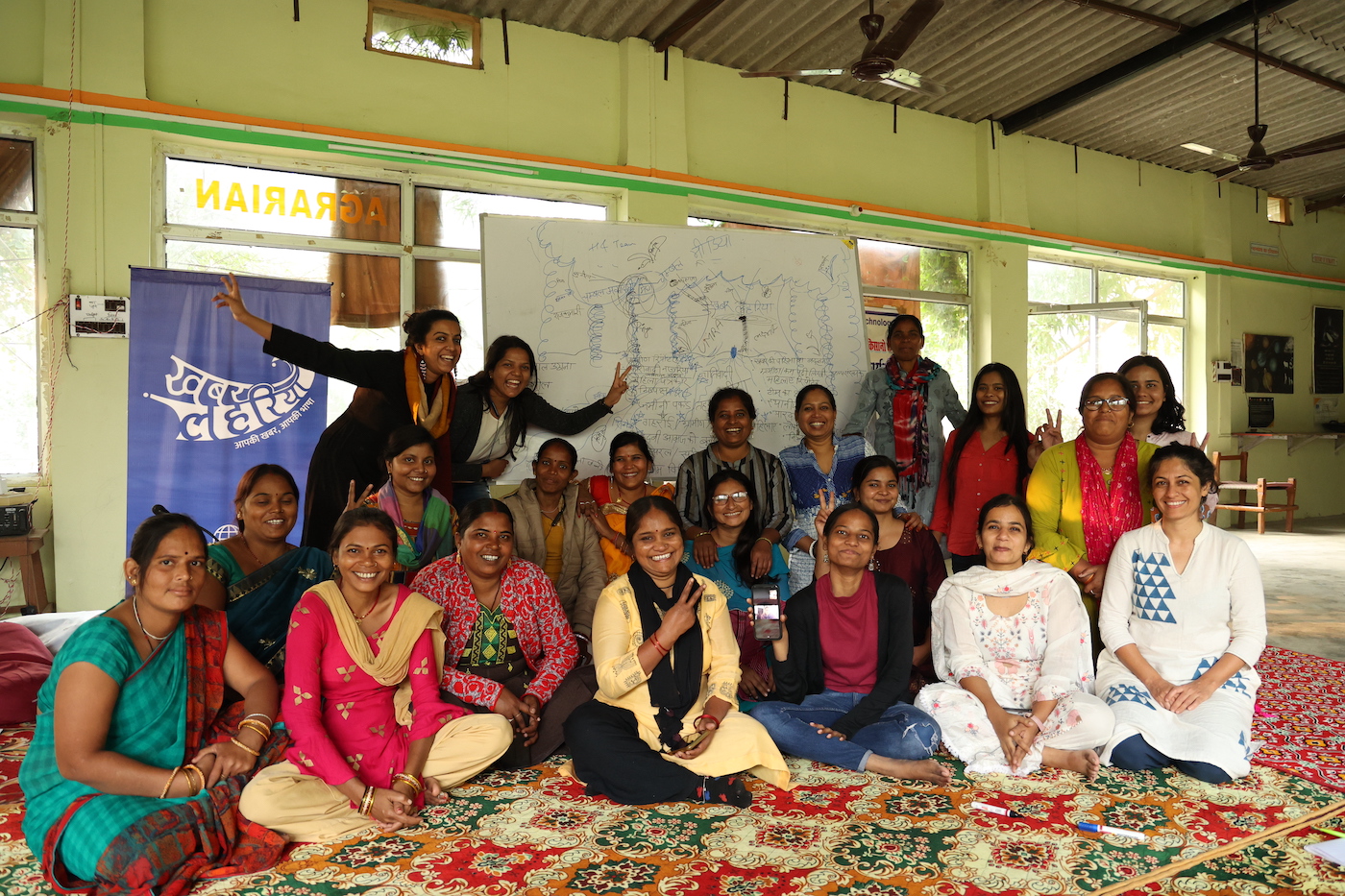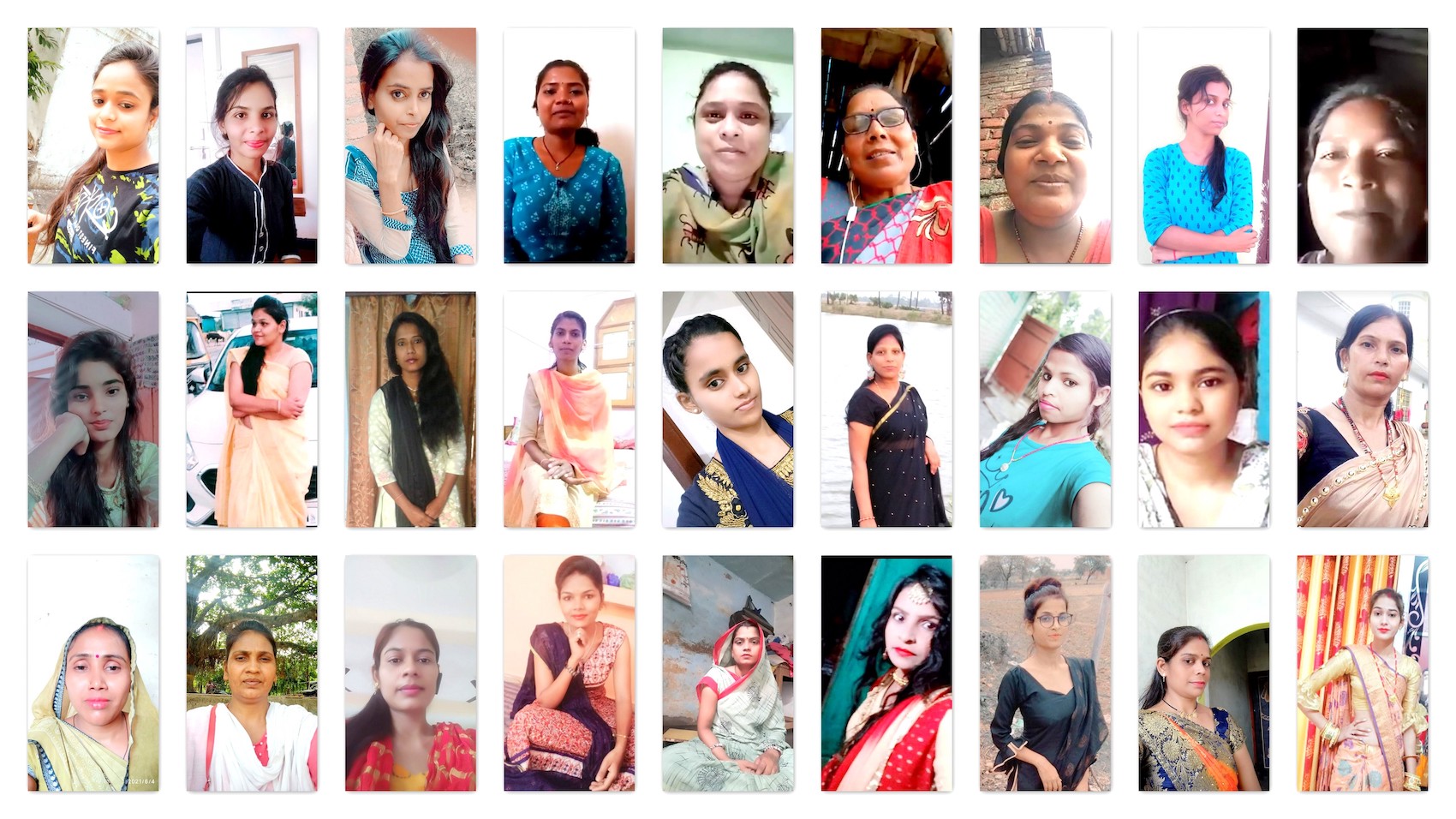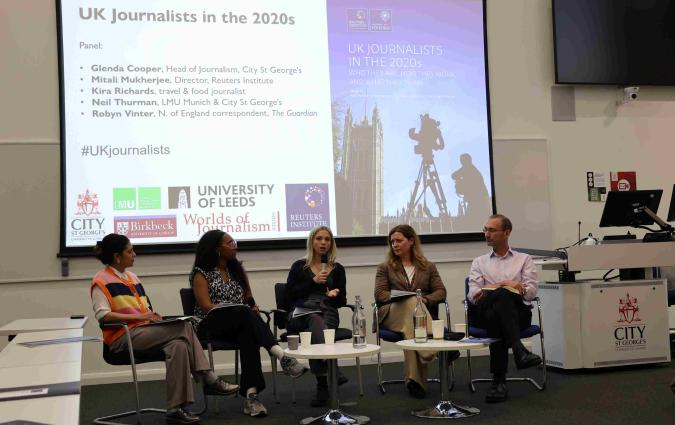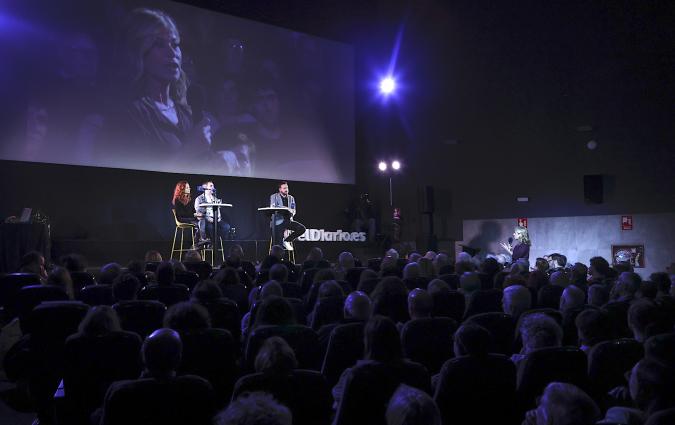This news site is training hundreds of young women in digital journalism to reach remote audiences in news deserts across India

Annual retreat of Khabar Lahariya, Chambal Media and Chambal Academy teams in Banda.
In the forested land near Manikpur in the Indian state of Uttar Pradesh, girls and women of the Kol tribe survive by collecting wood from the forest and selling it in the city. But when train services were shut down during the COVID-19 pandemic, these women lost their livelihood and income. Even when trains resumed, changes to ticketing made it near impossible for them to acquire the right passes for train travel.
When reporters from Khabar Lahariya, a rural-focused, women-led Indian news network reporting from the ground in February 2021, travelled to the area's remote villages to report the story, some of the women interviewed began singing a song in praise of the newsroom, thanking the journalists for telling their stories. “Nobody ever came to their village to report that something like this was happening, an entire village being cut out of the world. The women were so happy that someone had heard their stories,” says Priya Thuvassery, executive producer at Chambal Media, the social enterprise behind Khabar Lahariya.
It is stories like this that show Khabar Lahariya’s mission and its model working as one, co-founder and editor-in-chief Kavita Devi explains: “Khabar Lahariya started with the objective to bring to life the news deserts in India’s hinterland, mostly the rural areas where you wouldn’t find mainstream media covering issues that plagued these smaller places. Communities are still marginalised, whether that’s caste-based or Indigenous tribal communities. These are groups who don’t get the spotlight in mainstream media. One of our core objectives was that these people get their voices heard and that their issues come to the forefront.”
The newsroom has 20 women reporters working in India’s central states, Uttar Pradesh and Madhya Pradesh. According to India’s most recent census data, 77% of Uttar Pradesh’s population is rural as is 72% of the population in Madhya Pradesh. These journalists are trained in-house but bring their own knowledge and experiences from the rural communities in which they live to their work.
“The women who work as reporters are from those backgrounds, from those communities and they understand the problems of those communities,” says Devi. “That’s why they are able to report with a sense of empathy, with a sense of expertise, of having come from the same communities and speaking that language.”
Empowering women
By empowering these women, Khabar Lahariya brings a feminist perspective to news in India, in particular issues affecting rural populations. Representing rural, female voices is central to its operations and has led to stories that other newsrooms without such a focus or structure may well have missed.
During the pandemic, this has included covering not just the mass return of migrant workers from India’s cities to their home villages and towns owing to lockdowns but also the impact for these people and their communities in the aftermath. In June 2020, Bihar and Uttar Pradesh, where Khabar Lahariya reports from, accounted for 4.1 million out of a total 6.7 million migrant workers who had to return to their home villages and towns owing to COVID-19 restrictions and related work shortages.
“We followed safety protocols for our reporters out there, but it was also the time that they [Khabar Lahariya’s audiences] needed us the most,” says Devi.
A Facebook Live reporting on families in a village who were struggling to get sufficient food rations during lockdowns and featuring a helpline number from Khabar Lahariya showed the team how far their journalism was travelling, as viewers in states where they have no reporting presence called for help.
“The impact the pandemic was having on vulnerable people was not something that was being communicated in the mainstream media. Now more than ever, these voices needed to be heard and these problems needed to reach the relevant authorities. Our reporting can have that service so that people don’t go hungry because of a lockdown.”
The impact of the pandemic on girls’ education, women in the home, mental health and domestic violence rates in rural areas have all been crucial areas of coverage. It published ground-breaking reporting into how rural citizens’ privacy was being threatened by the use of drones used to detect breaches in COVID-19 protocols.
“Because of our network of reporters we were quickly able to identify these issues and in a rural context,” says Devi.
Training hundreds of young women
Khabar Lahariya is a digital-first newsroom with an emphasis on video journalism. It began to transition away from print in 2015, training reporters how to shoot stories on smartphones, anchor video stories, host Facebook Lives, capture great photographs on their phones and use social media to share their work.
The news outlet started as a training programme more than 20 years ago. As the COVID-19 pandemic hit, the team was already considering a return to these roots. “We were thinking, what’s next? We have all reached a stage in our careers when we want to give back,” says Thuvassery, who also oversees operations at Chambal Academy, a training programme created in June 2021 by Chambal Media. The programme aims to provide training in rural, mobile journalism to 750 young women aged 18 and above from the states of Uttar Pradesh, Madhya Pradesh, Bihar and Chhattisgarh.
“It is not just about learning a skill or getting a diploma,” says Thuvassery. “It’s about women being actively there as storytellers, as a source of these stories and as [media] consumers.”

The pilot programme concluded in early December and saw 270 young women participate in a six-module course that begins by “building a feminist lens” and moves on to news skills. Taking a feminist perspective is crucial to this training because much of the country’s mainstream media is still male-dominated and stepping out from their families as a reporter was challenging, says Devi: “Establishing an identity as a woman journalist and a journalist in rural areas is something we take very seriously. For a woman who’s in a rural area to take up a camera and start reporting, it’s quite a leap.”
Topics covered by the modules range from the role of rural journalism in a democracy to mobile journalism in a rural setting and editing for social media. The trainees were hand-picked for this pilot, but Chambal hopes its alumni will help it reach future trainees in these rural areas, especially in Bihar state, where it would like to expand its reach and coverage.
An eye-opening experience
Not all of the women will go on to work with Chambal Media, but this is about more than just training the next generation of Khabar Lahariya reporters, says Thuvassery: “For us, impact is not how many girls we work with, how many viewers, how many touchpoints. It’s more about how it changes lives in ways we don’t even imagine. It’s not just training women to be journalists, they could also be better viewers and digital consumers tomorrow as well.”
This impact is a bit harder to quantify, but is just as important, says Thuvassery. For example, the feminist grounding of the training led one participant to question why she was not allowed out of the house at night but her brother was. Another trainee queried why when chicken was cooked at home her brother would always be given the leg piece “She started looking at her normal reality through a gender, patriarchy lens,” she says.
The new training programme was conducted entirely online and an early lesson from the pilot project has been the challenge of equal access for all trainees. Some girls had to borrow a mobile phone from their father, brother or neighbour to access the modules, negotiating a time when the device would be free for them to use. This obstacle aside, self-paced, weekly video modules allowed the participants to rewatch and repeat material as much as they needed.
“Most online learning platforms are made for good internet and an English-speaking audience,” says Thuvassery, who hopes Chambal Academy can build its own online training platform that accounts for the needs of women and girls in rural settings. The academy received seed funding for this pilot programme, but has plans to support future training through individual and institutional subscriptions to different courses.
Chambal Media is also producing toolkits for its reporters, would-be journalists and news consumers, addressing a similar gap and building media literacy: “The toolkits that exist on digital security and fake news meet the needs of an urban audience and urban journalists, but are not yet meeting the needs of a rural audience or reflecting a rural context,” Thuvassery says.
This context includes the challenge of being highly visible as a female journalist in a rural community: “As an urban journalist, you might never meet your troll; for rural journalists, they could be in your market, travelling with you on your bus or train. How do you deal with such situations?”
From the pilot programme, 30 students will be selected for a scholarship and will produce a report for Khabar Lahariya. Trainees looking to use their new skills will also be connected with NGOs and community organisations working in rural settings, broadening women’s role in how rural communities and women in rural India are served and represented.
“India is going to see a big change in the size of rural audiences in the next few years because rural audiences are digital consumers. Who are these consumers going to be? I don’t want them to be just men, I want them to be women and girls as well and they should be sensitive and aware of what is happening,” says Thuvassery. “When we hear a story from rural India, it shouldn’t be just the men speaking about it. It’s enough that men speak for us, it’s our turn to speak – and tell the stories.”
Laura Oliver is a freelance journalist based in the UK. She has written for the 'Guardian', BBC, 'The Week' and more. She is a visiting lecturer in online journalism at City, University of London, and works as an audience strategy consultant for newsrooms. You can find her work here.







